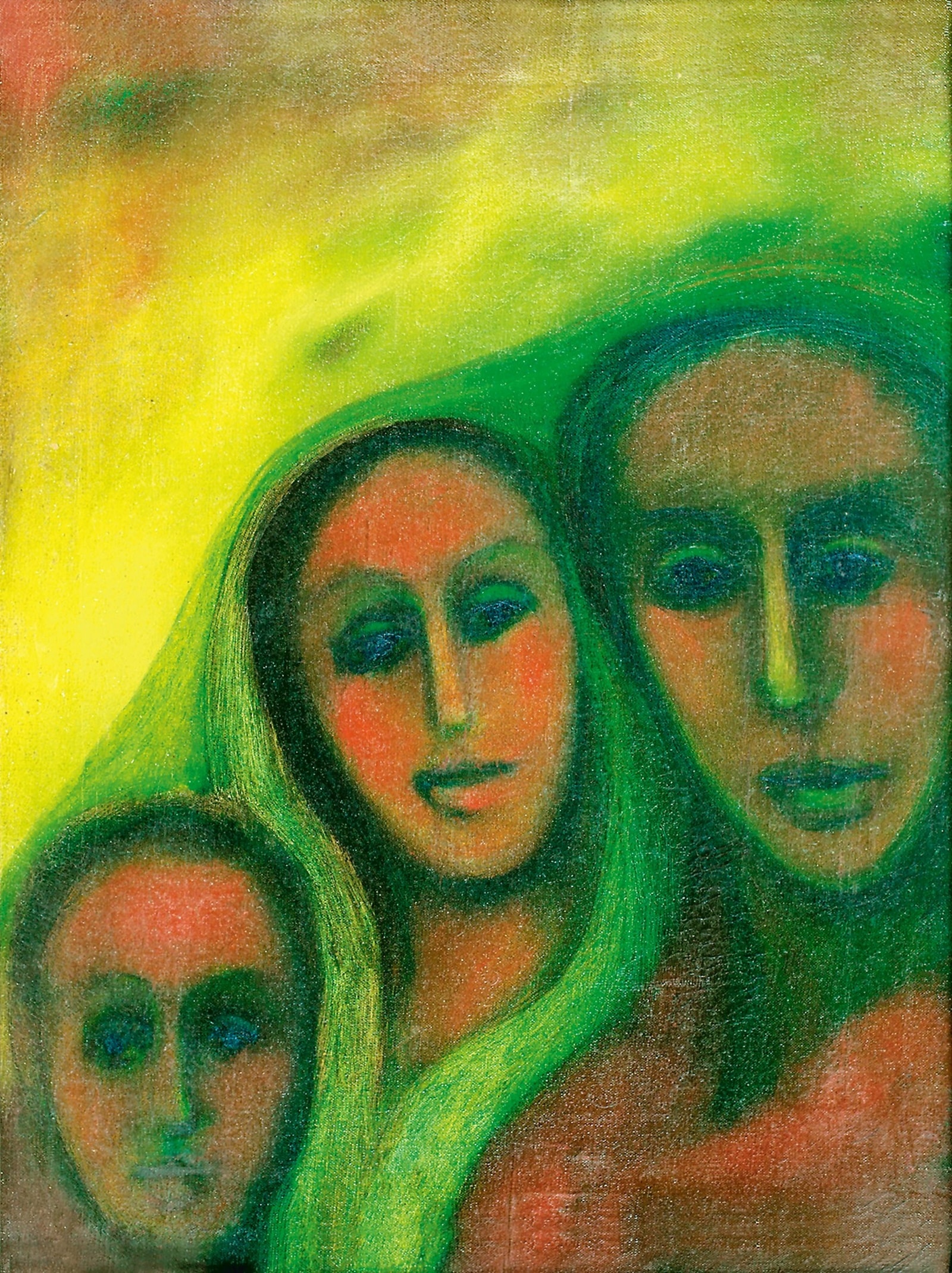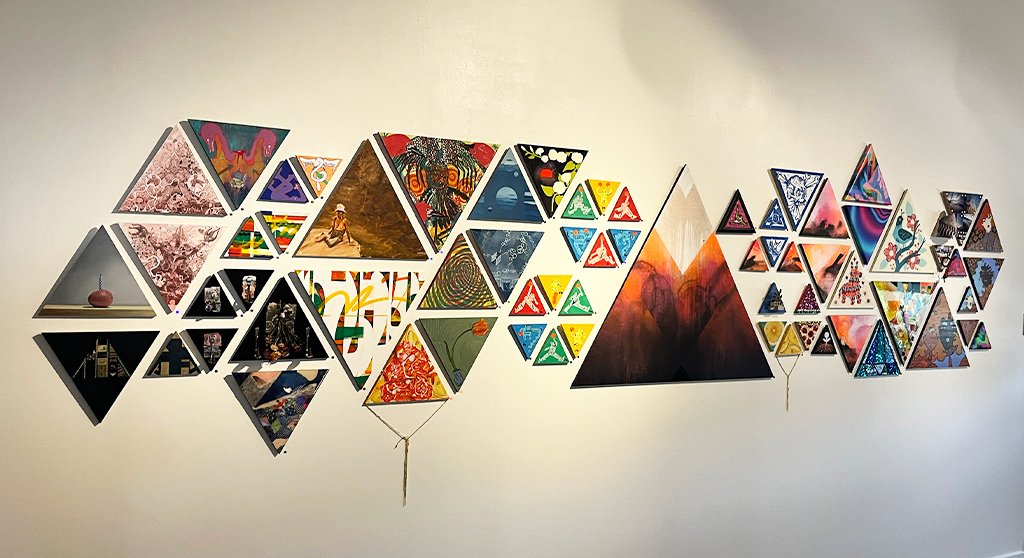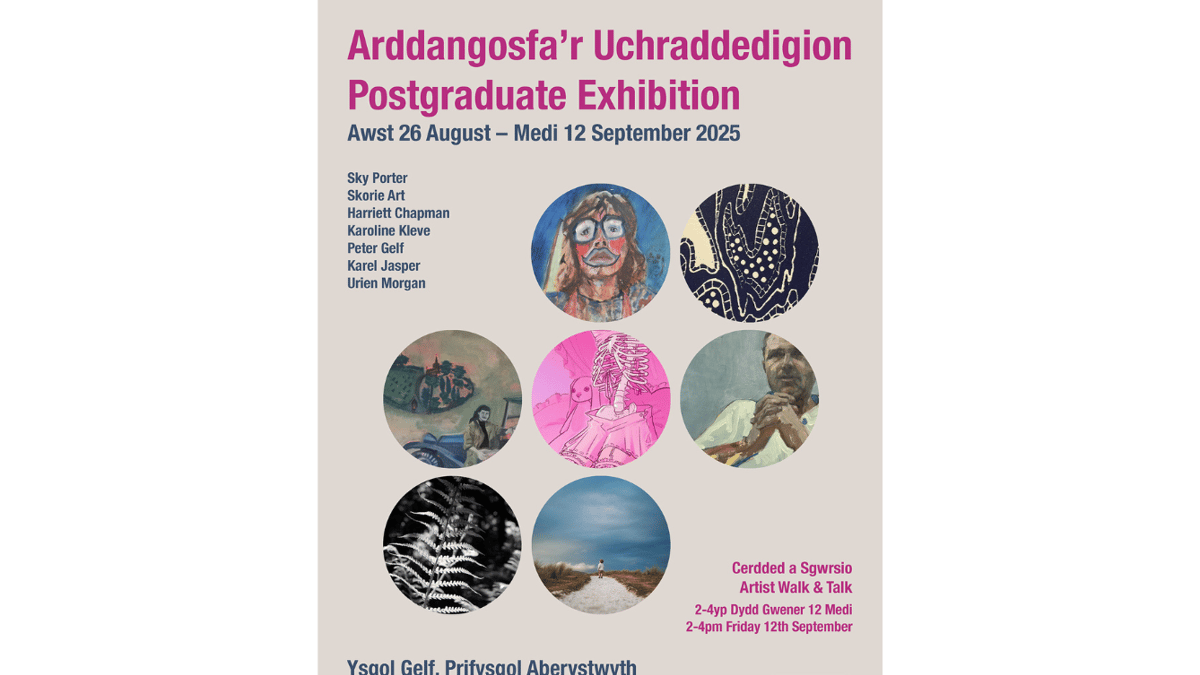Roobina Karode, director and chief curator at the Kiran Nadar Museum of Art in Delhi, distinctly recalls visiting a pale Gogi Saroj Pal in 2008, after the artist suffered from a fall that ruptured her hip bone and led to her being confined to her home for three years. “Far from crying over her fate, Gogi painted, through her pain, one of the richest series in gouache I have seen in recent years, layered in complex meanings. She had embraced one more challenge in her rebellious life, reflecting by extension in her art as well,” writes Karode in the DAG publication Gogi Saroj Pal: Mythic Femininities that accompanies an eponymous exhibition at the DAG gallery in Delhi. Spanning over six decades of her work, the showcase also includes the very series that Karode refers to: “Kinnari & Kinnari Mantas”, with repeated images of the hybrid part-woman, part-bird figures. “Flight became a metaphor for the much-desired mobility; for freedom, or if you will, a means to escape her physical condition,” adds Karode.
In the making for more than a year, the exhibition now also pays tribute to the artist who passed away in January 2024, at age 79. “I’m fascinated by social links and their mythological values. My work is an investigation into whether we are carrying the dead weight of folklore and beliefs. We should not just carry on with legacies, but question them,” she had said in an interview to The Indian Express in 2014.
The showcase also informs the audience of her life and times, and how her protagonists mirrored the self. If works from her art school days — at Government College of Art and Crafts, Lucknow, and College of Art, Delhi — reflect her skill with naturalistic techniques, the inclusion of her etchings document her experiments with printmaking. The undressed nayikas appear as lovers who indulge in self-care, and the fibreglass “Hathyoginis”, her very last works, imbibe elements from the iconography of Kali, and the tradition of Hatha Yoga.
“She didn’t like being termed a feminist, but she certainly spoke about her work from a feminist perspective that was uniquely Indian. When she was representing the body of a woman, they were not in themselves sensual or for the audiences’ viewing pleasure but implied sensuality… She felt, by a woman’s very nature she is a nurturer who will be tethered to her roles in the social context, as a mother, daughter, sister, wife and so on, but her mind is free; it is how women chose to escape from a world of patriarchy through imagination to escape their confinements to spaces of memory and liberation — and that is what gave them wings,” says Kishore Singh, Senior Vice President, DAG.

Born in Neoli, Uttar Pradesh, to a Himachali family of freedom fighters and writers, she spent her childhood in close proximity to nature. While her grandmother announced how a ‘child Durga’ had arrived upon her birth, she remained a constant supporter of her radical sensibilities. She also encouraged Pal and her brother to paint and their framed works were mounted on the walls of their home. Still pursuing her graduate diploma in Lucknow when she started selling her works, Pal continued to depict the marginalisation of women, their desires and predicaments. If in the series “Homecoming”, winged women hover over floral landscapes, in “Relationship”, she depicts women with their pets. Portrayed as kamdhenu, she pondered how submissive women are idealised by some, and in “Aag ka Dariya” and “Mahasnan” she contemplates cultural connections between women and water.
“As a woman and as an artist I am concerned that people attach labels to my work without realising that it is the issues that I address through my paintings that are more important. Particularly since the issues have not really changed over the years. We still talk of confining women, of punishing people who don’t follow society’s rules. I would be happier if there was some analysis, some understanding, some curiosity even, rather than just acceptance,” she states in an interview to Ankan Kazi in the DAG publication.
It was also her own struggles as an artist and experiences with the prevalent biased gallery system that led her to ideate a studio-gallery with husband Ved Nayar in the late ’80s. “A thing I learnt from her is to never give up in the face of difficulties,” writes her adopted family — her dedicated helper Rekha and her two children Ambi and Mickey — in the publication. In his essay, Nayar asserts how “Gogi always remained a free-spirited person whose boundless creativity and energy could not be curbed”.
© The Indian Express Pvt Ltd
First uploaded on: 18-05-2024 at 22:16 IST







